- Antipasti
- Bella Italia
- Dessert
- Drinks
- Favorite Italian recipes
- Main courses
- Pasta
- Pizza
- Side dishes and salad
- Tips & Knowledge
Pasta dough without egg – made from durum wheat semolina
Simply make your own pasta! The basic Italian recipe for pasta dough made from pure durum wheat traditionally requires no eggs and is therefore even vegan. The secret to success lies in choosing the right ingredients.
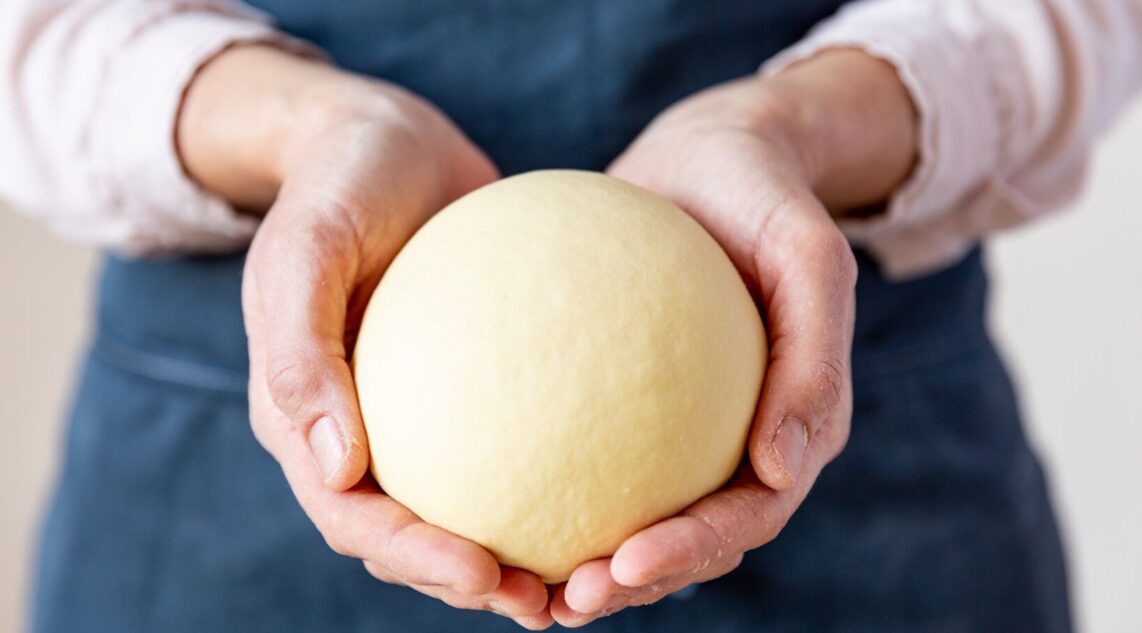
- 400 g Durum wheat semolina , Semola di grano duro
- 200 ml Water
- 0,5 TL Salt
Schritt für Schritt durch´s Rezept
- Step 1Place the durum wheat semolina in a pyramid shape on a work surface. Make a well in the middle, sprinkle in the salt and gradually knead the water into the semolina.
- Step 2Knead the dough with your hands (or in a food processor) until everything is combined. If the dough is too hard, add water drop by drop (really drop by drop) until the consistency is smooth and elastic, but no longer sticky.
- Step 3Shape the dough into a ball, wrap in cling film and leave to rest for 30 minutes.
- Step 4Then roll out the dough (using a pasta machine or rolling pin) and cut into the desired shape.
- Step 5Cook the pasta from this dough in plenty of boiling salted water. When the pasta floats to the top, it is ready.
- Step 6Important: Never leave pasta dough out in the air for a long time, otherwise it will quickly become brittle!
Vegan pasta dough – step-by-step instructions
Egg-free pasta dough in Italy
Pasta secca, i.e. pasta dough without eggs, is more common in southern Italy. In the north, Italians eat pasta all’uovo, i.e. pasta dough with eggs.
The explanation for this lies in the wheat. The gluten-rich durum wheat has extra good adhesive properties, which is why pasta made from durum wheat semolina (semola di gran duro) sticks together very well even without the addition of egg. However, this durum wheat only grows in the south.
Northern wheat does not contain as much gluten. Eggs are used here to ensure that the pasta dough holds.
Dry fresh pasta dough without egg
A lot of space is needed for drying so that the pasta does not stick together. Here are various options:
- Baking tray lined with baking paper
- Pasta dryer
- Horizontally suspended broom handle
- Clothesline
- a cloth on a board or the work surface
It is important that the pasta is completely dry, which can take up to two or even more days at room temperature.
Does homemade pasta keep?
Home-made egg-free pasta has a very long shelf life, much longer than pasta made from egg batter. However, it is important that you pack them airtight, e.g. in tins or jars.
Another option would be to freeze it. If you decide to do this, you can put the pasta in the freezer immediately – without drying it. If necessary, cook directly in boiling salted water.
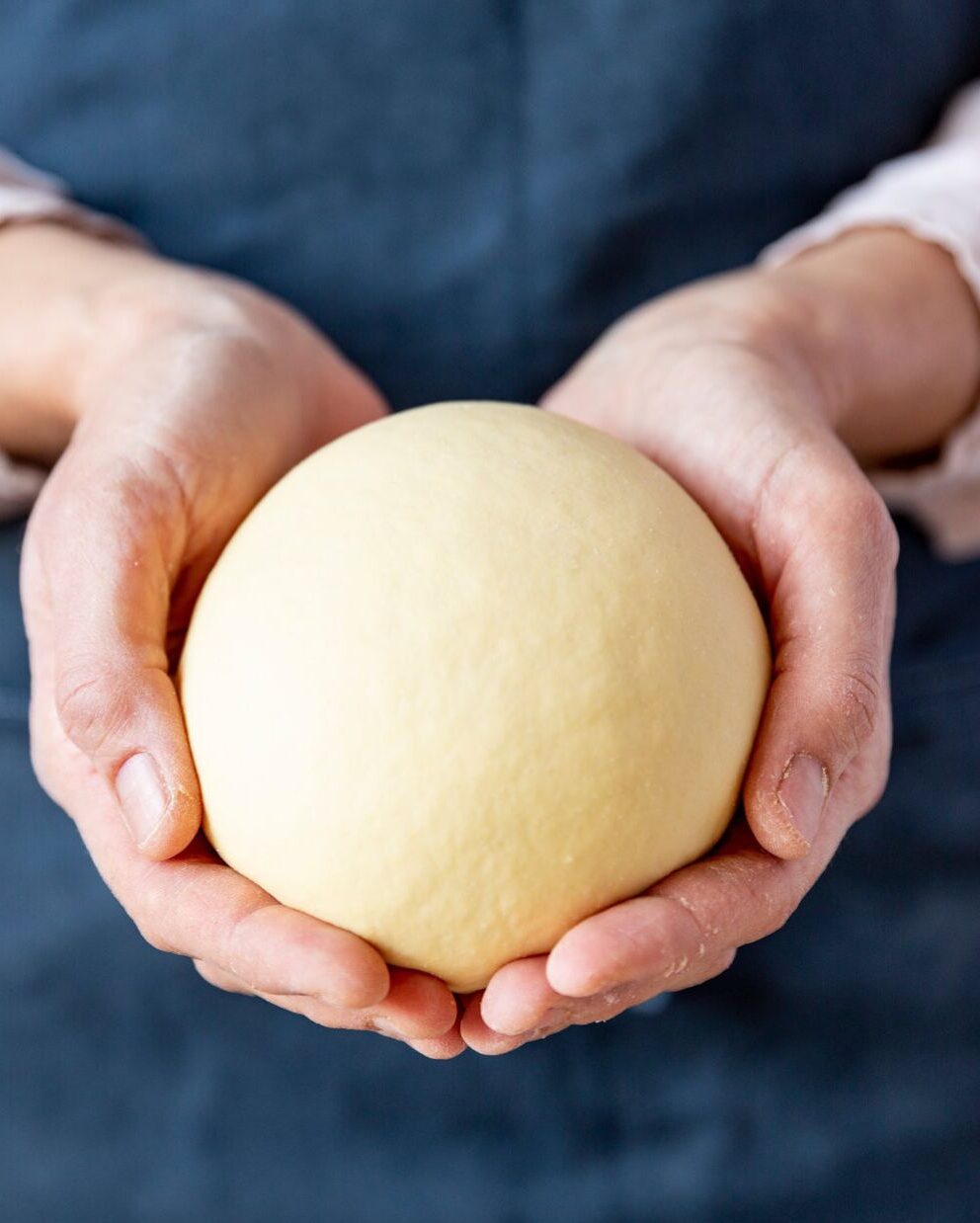
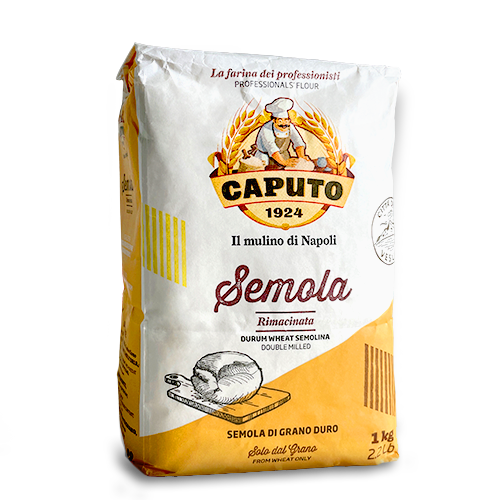



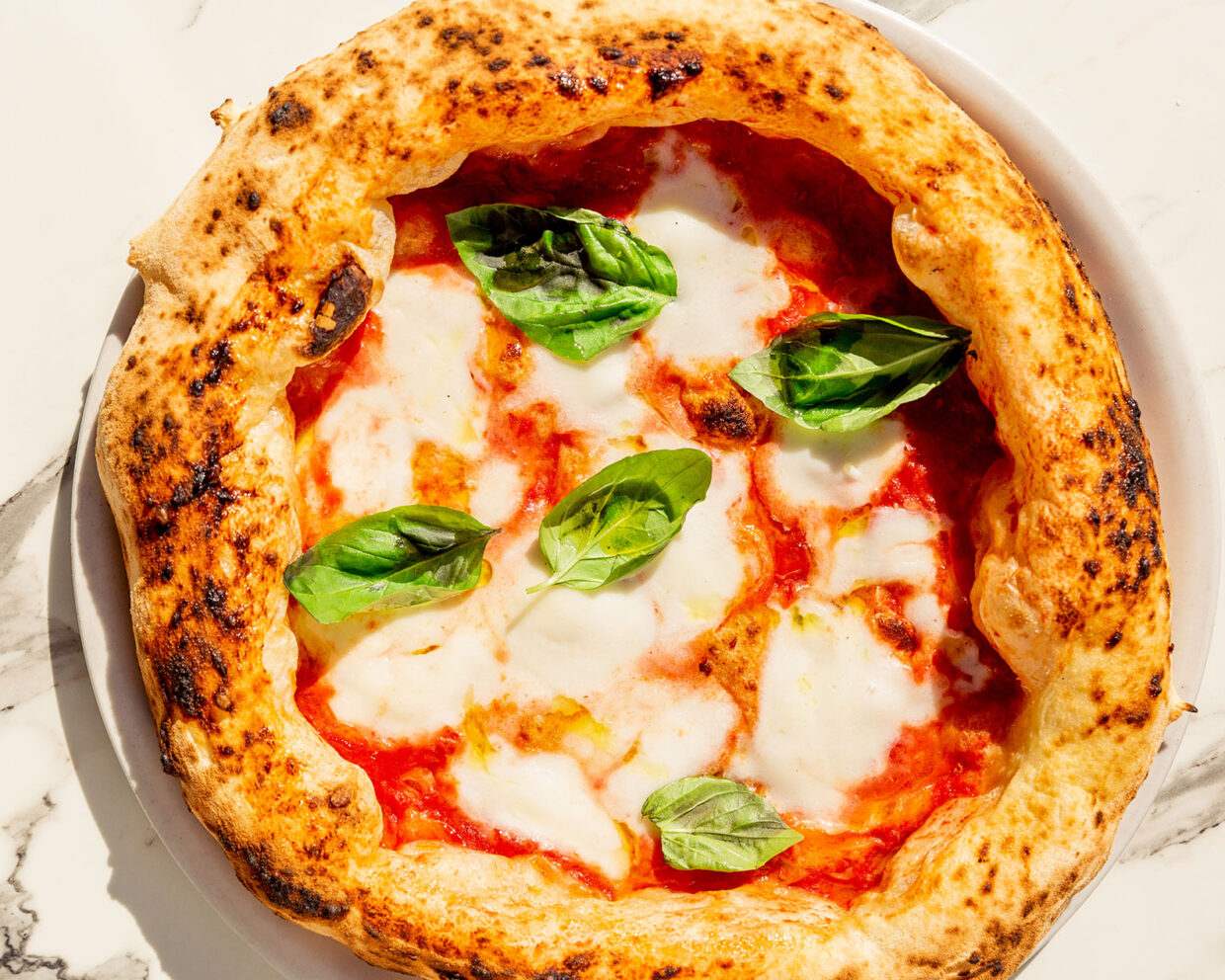
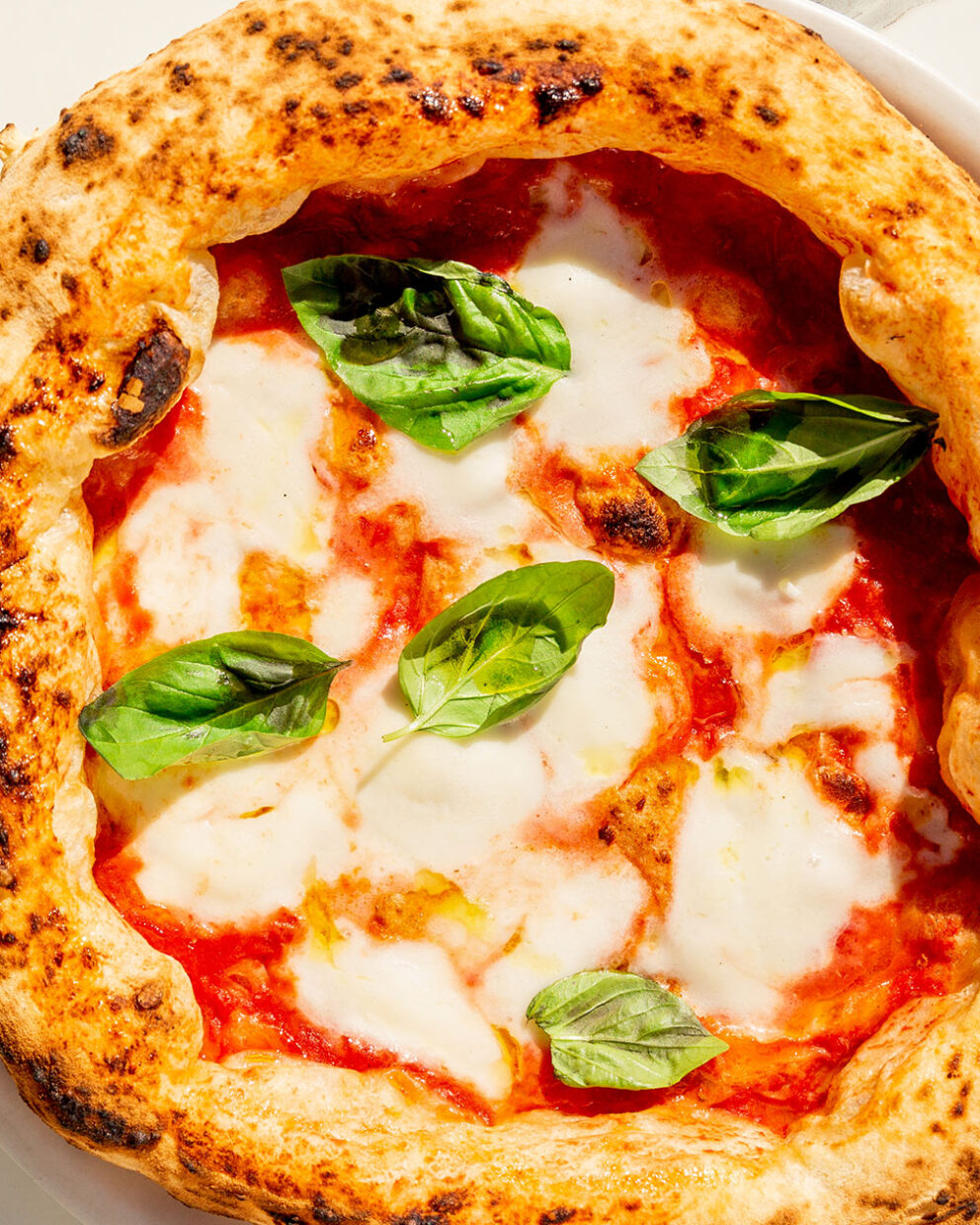
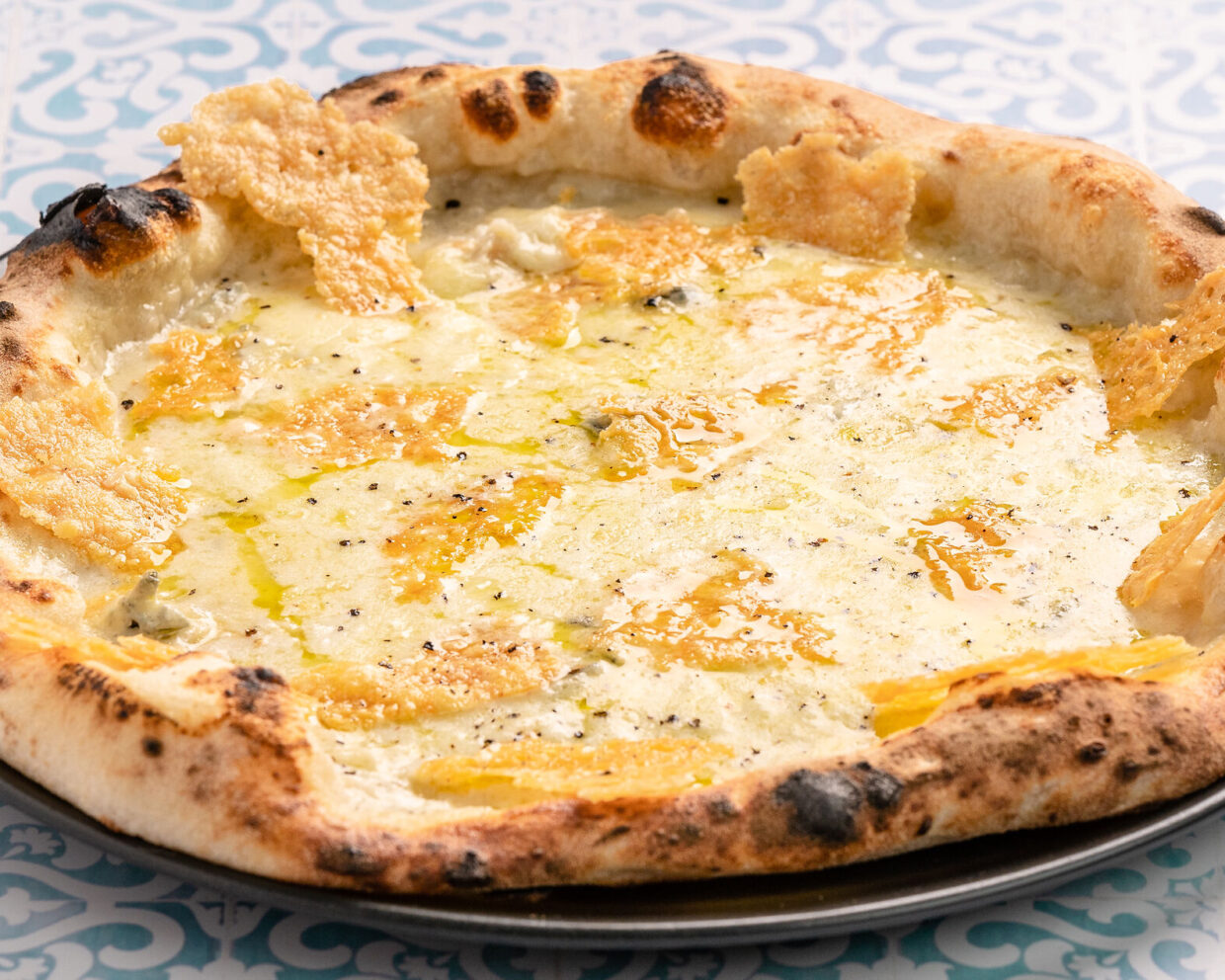
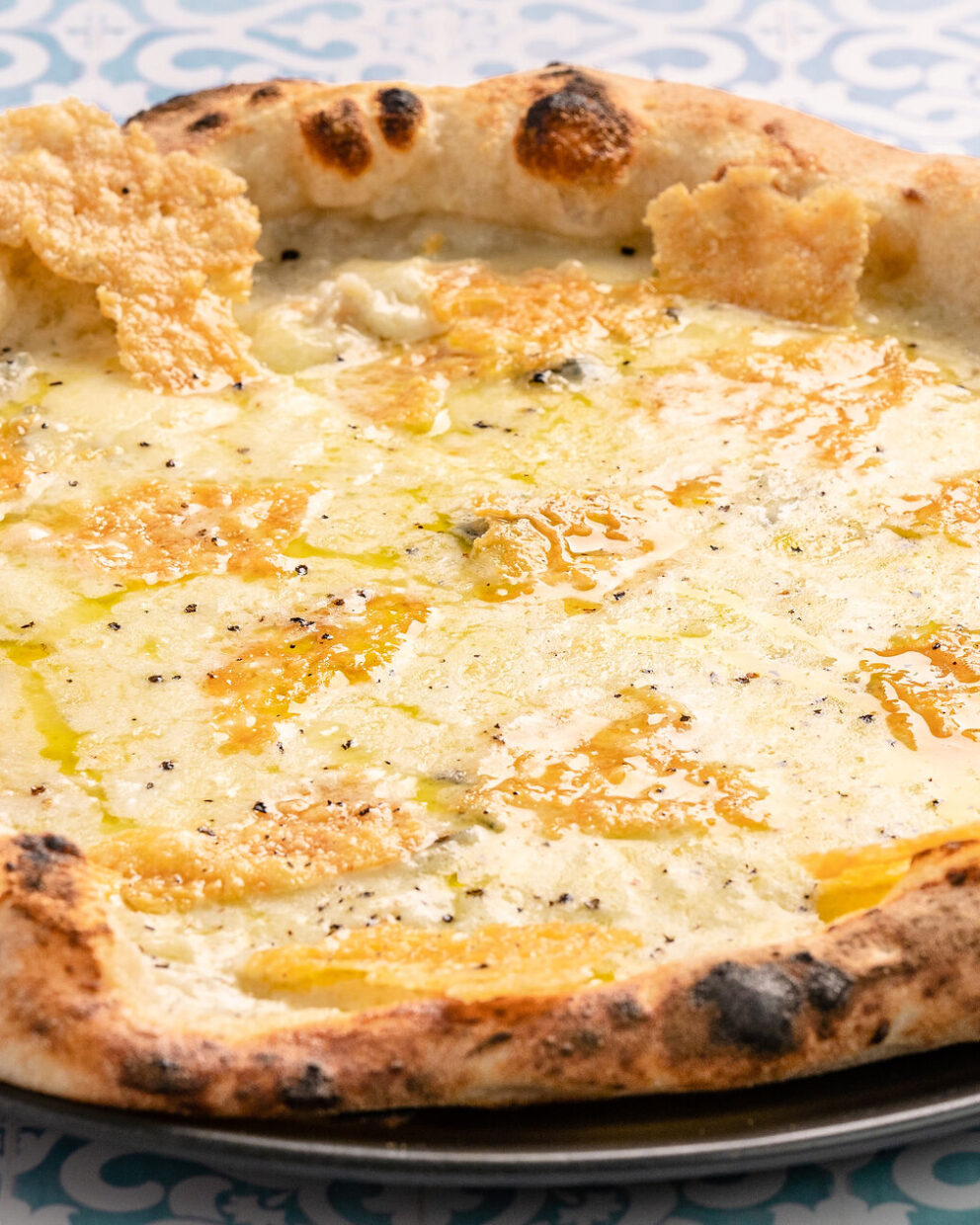
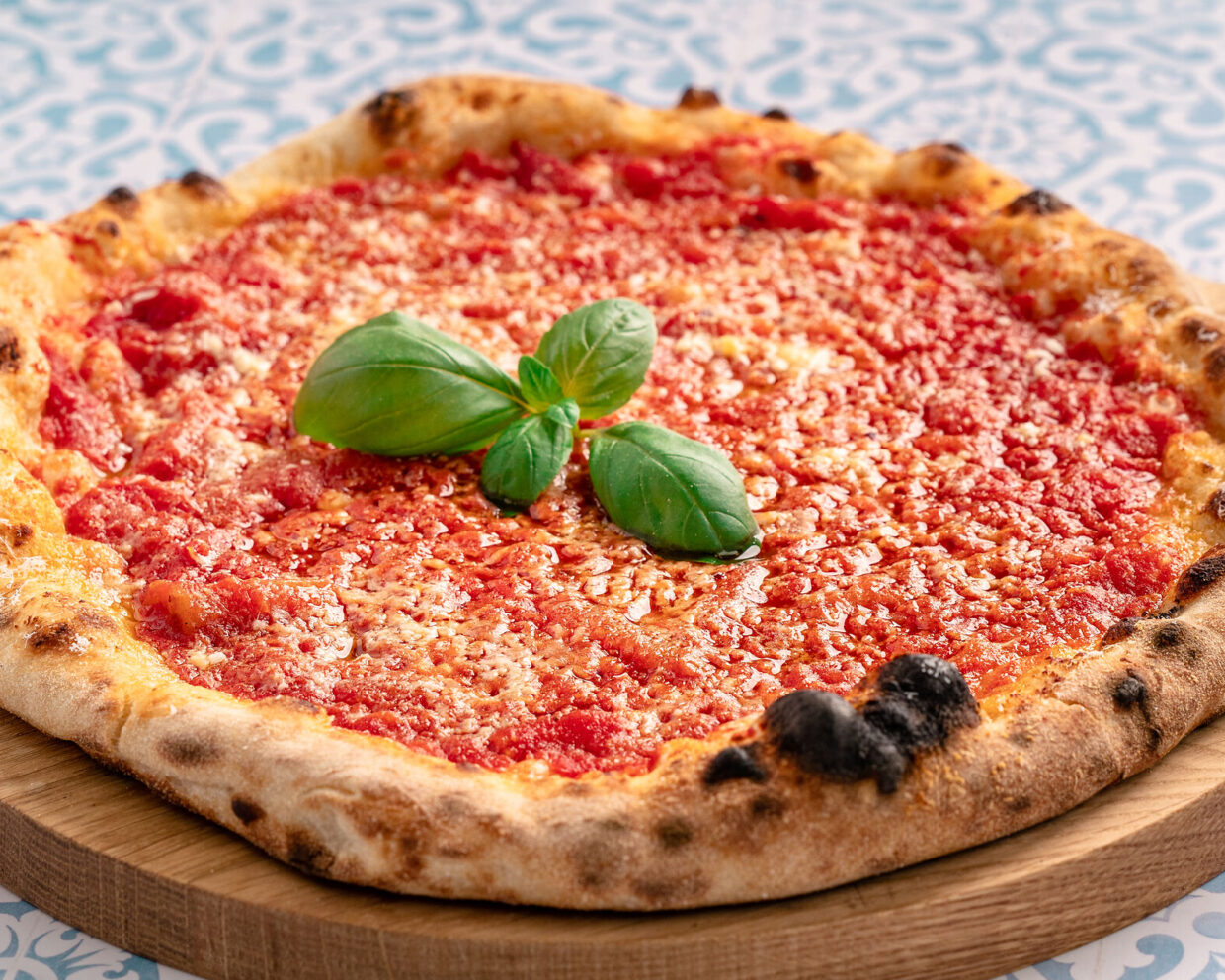

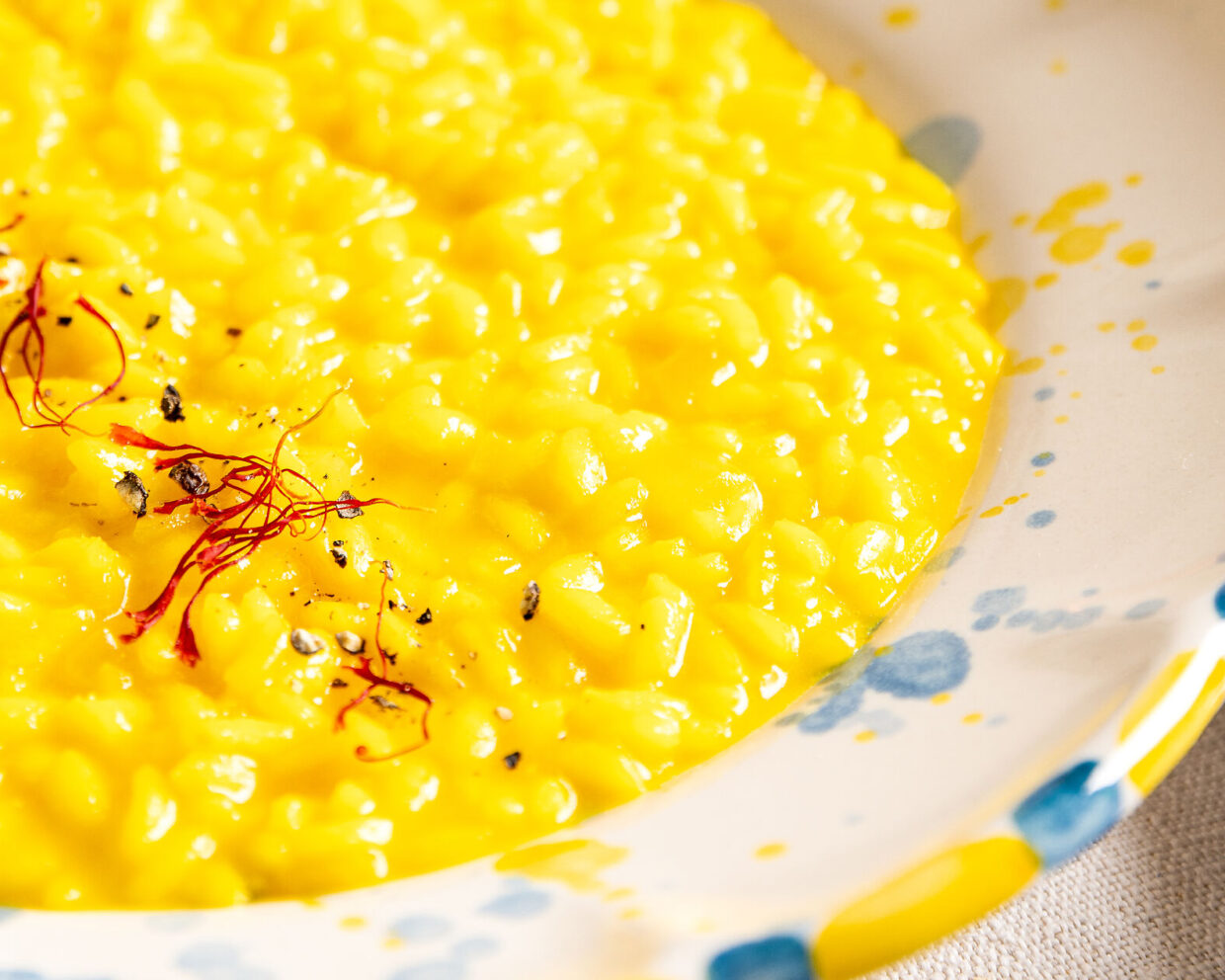
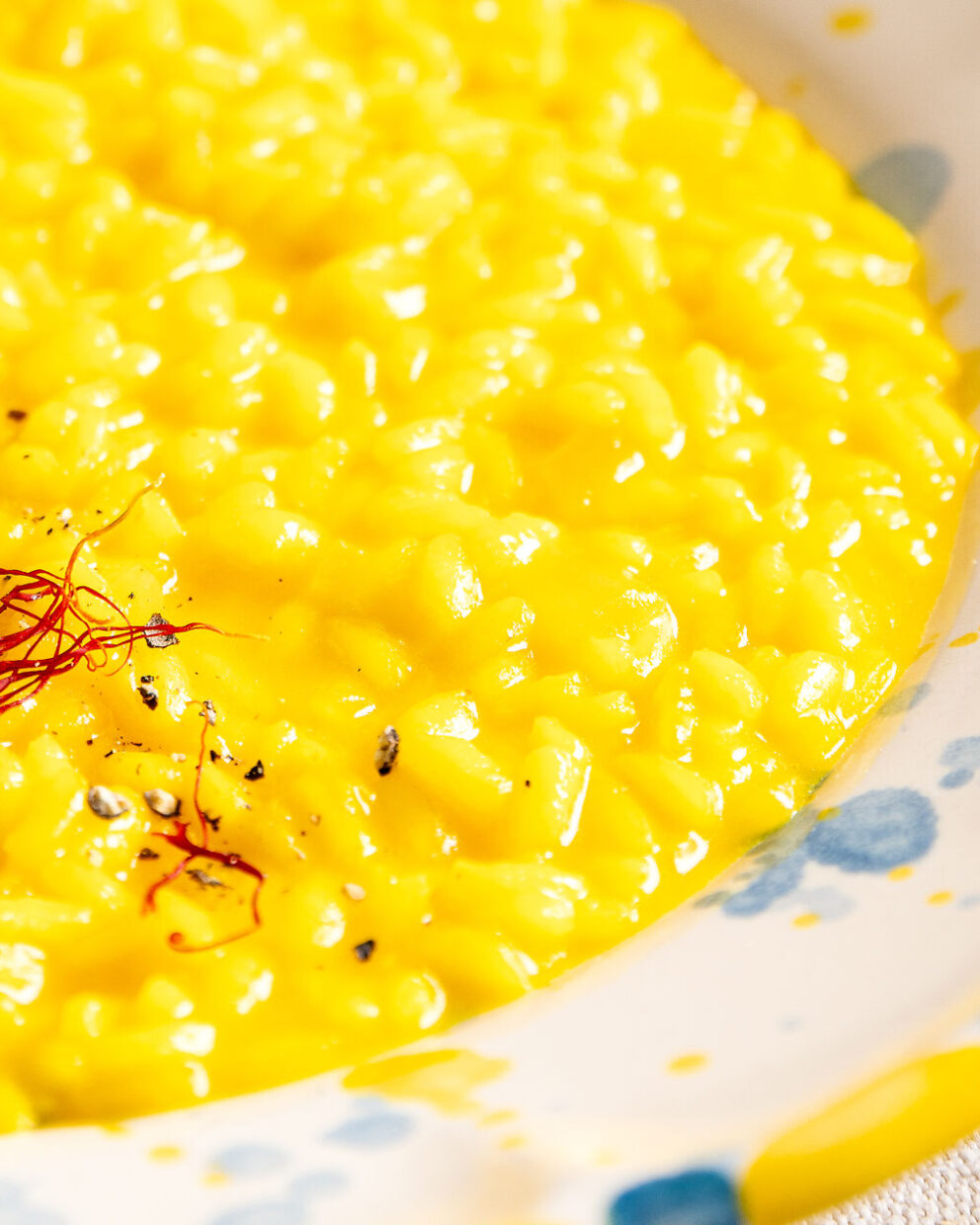
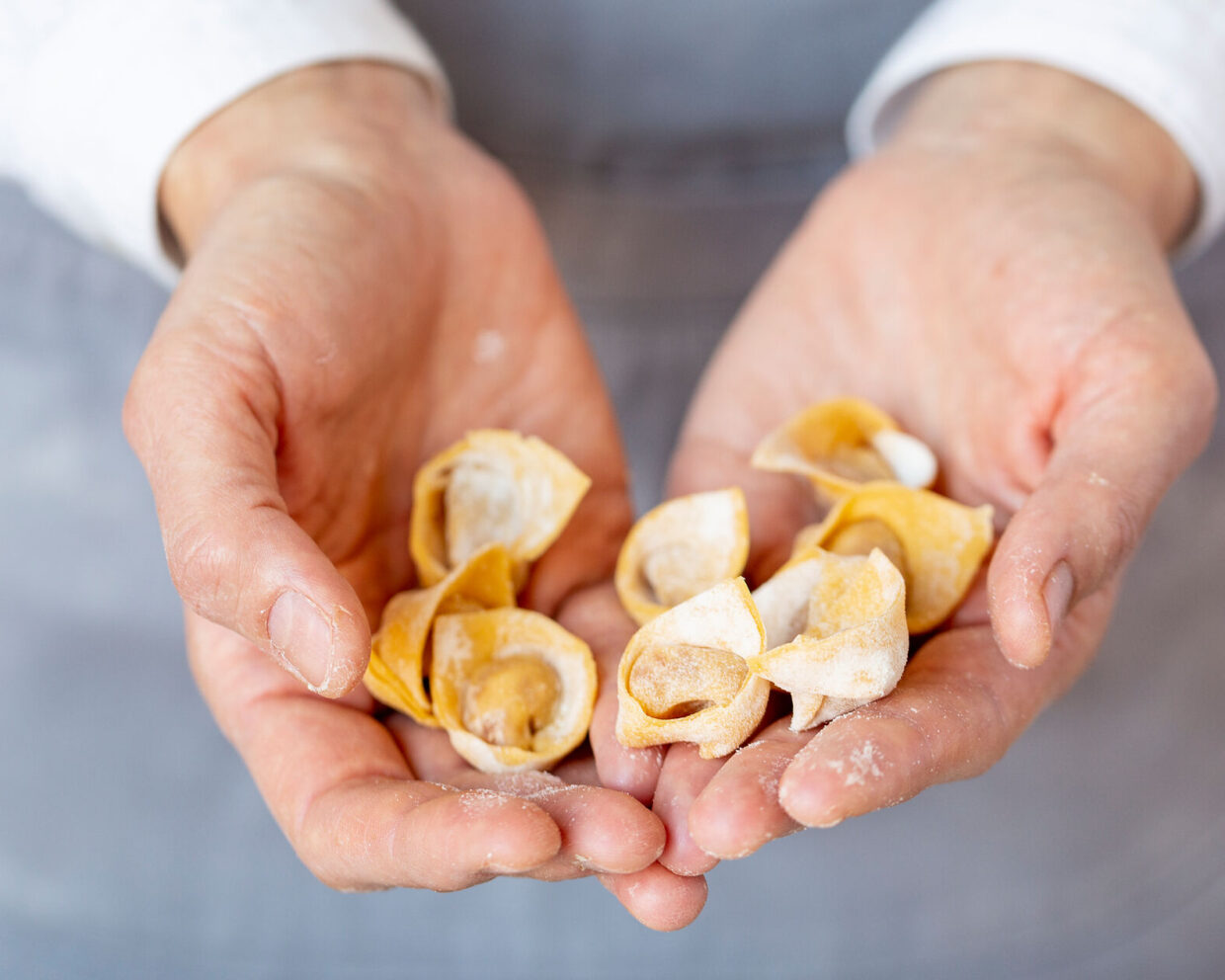
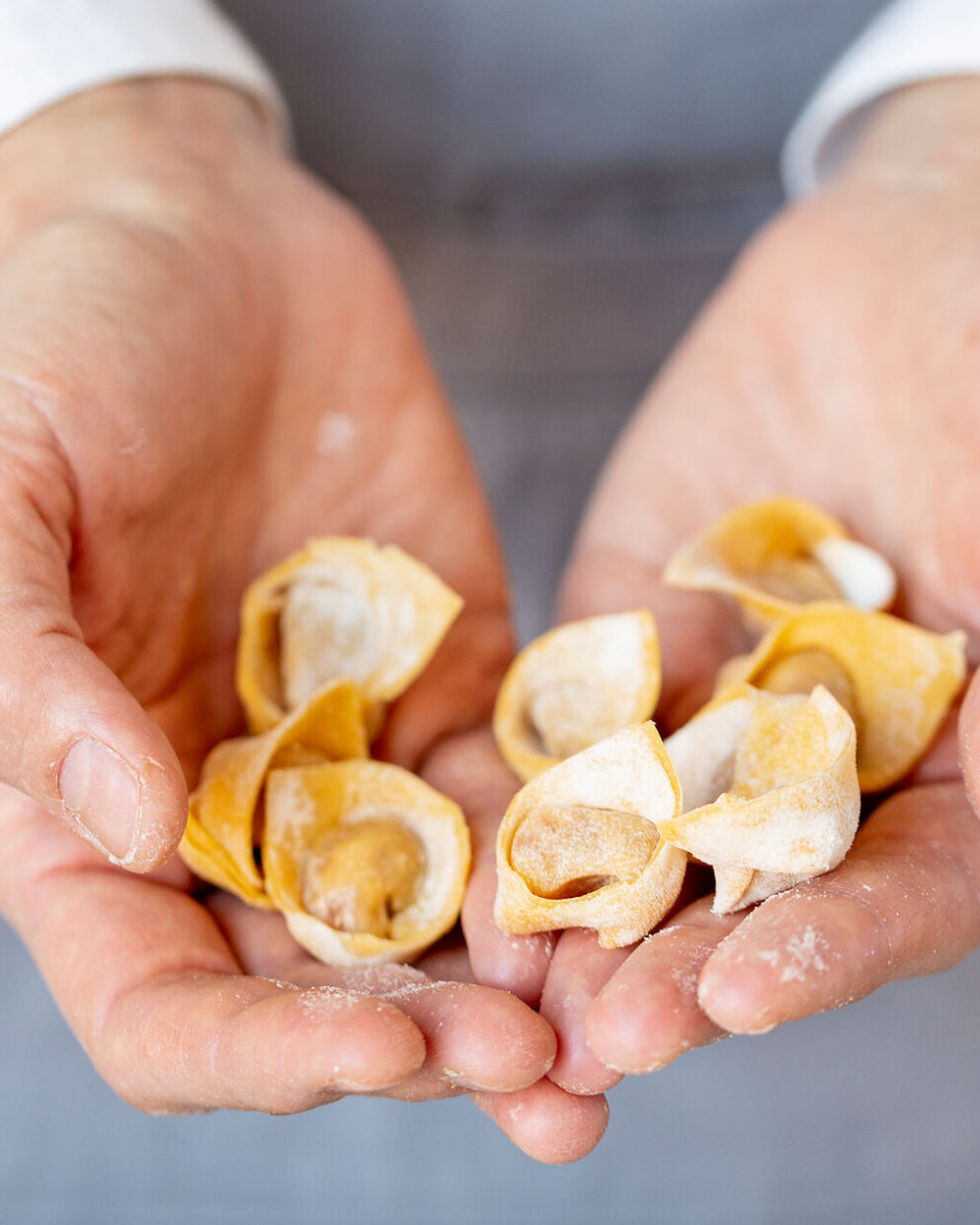
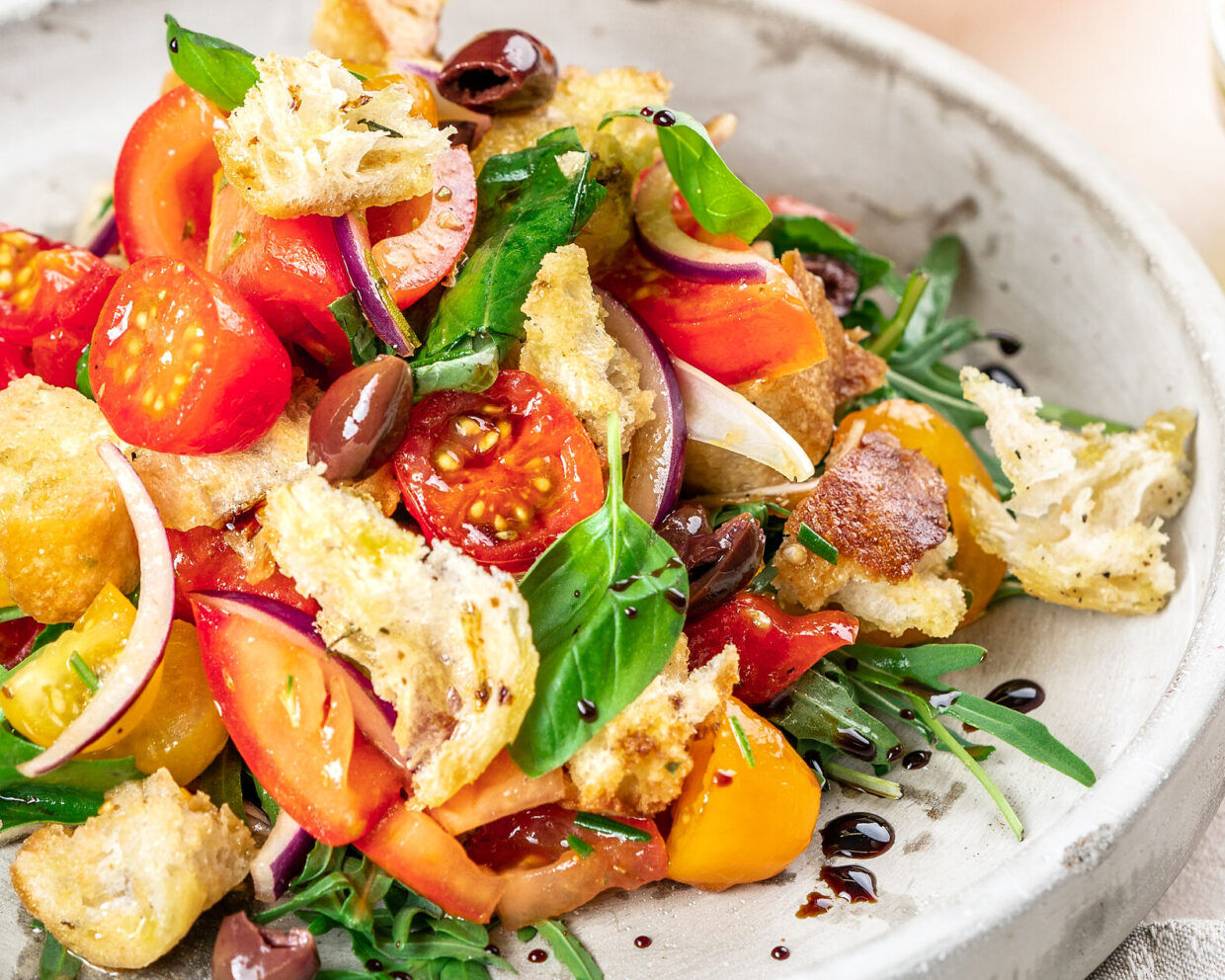
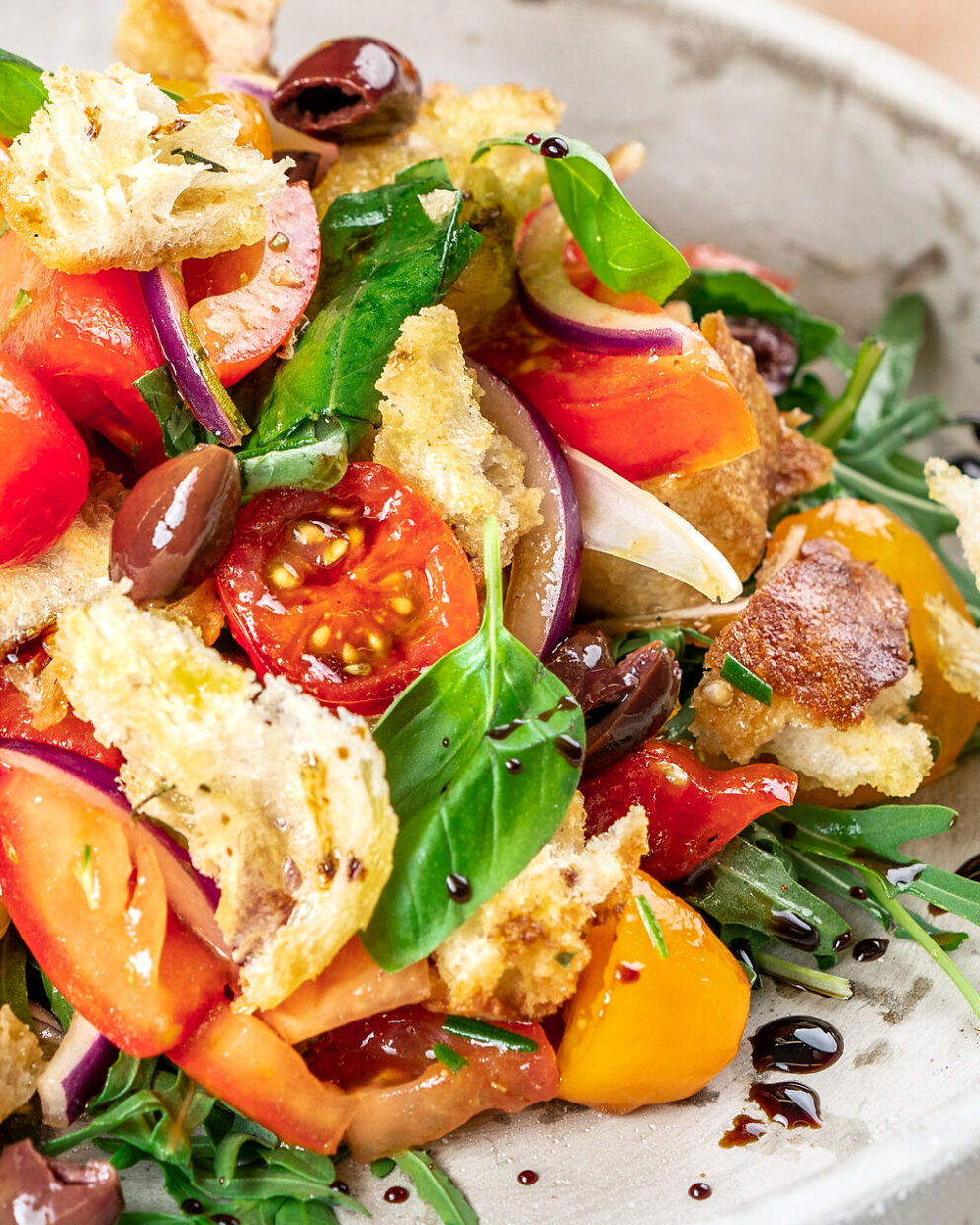
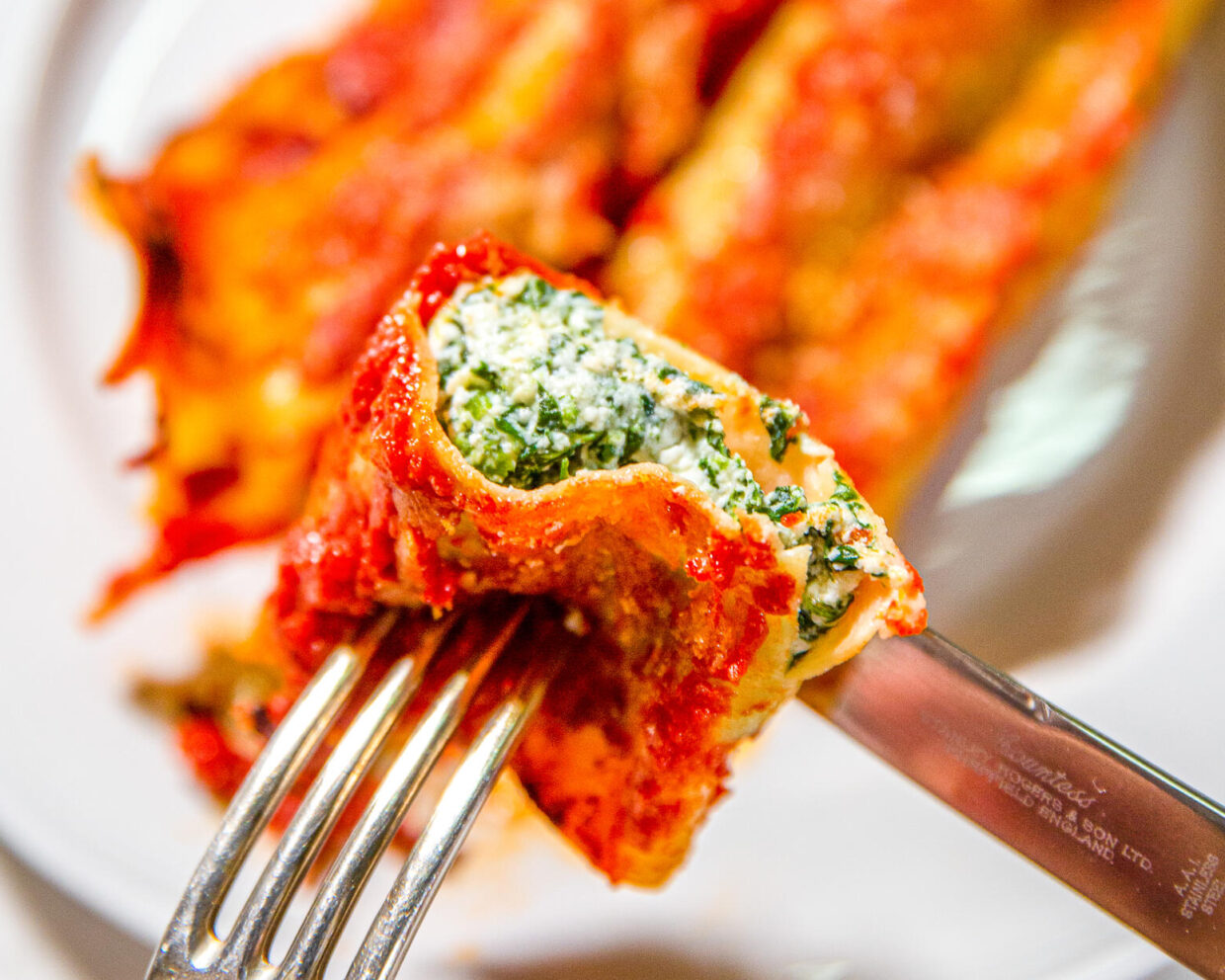
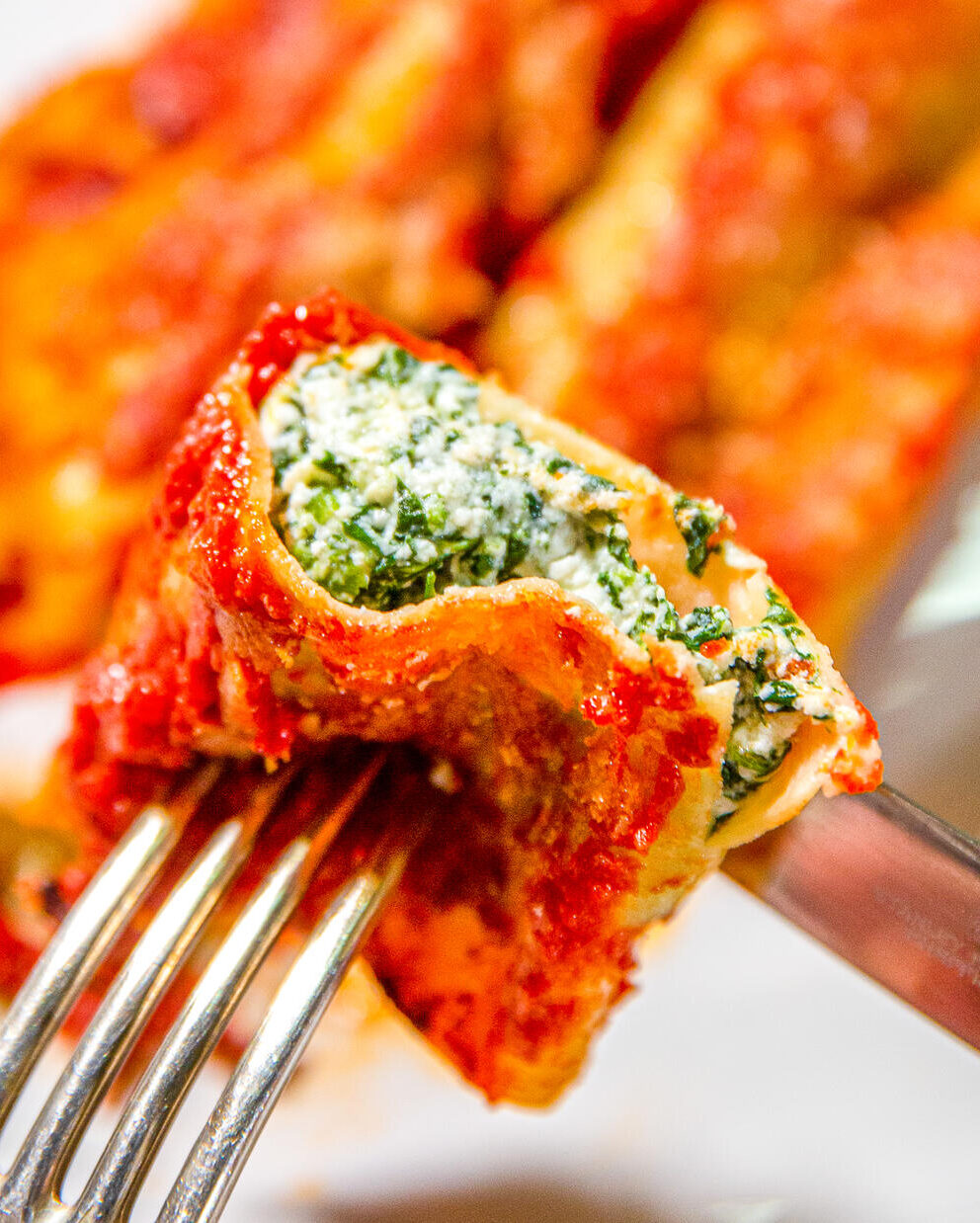
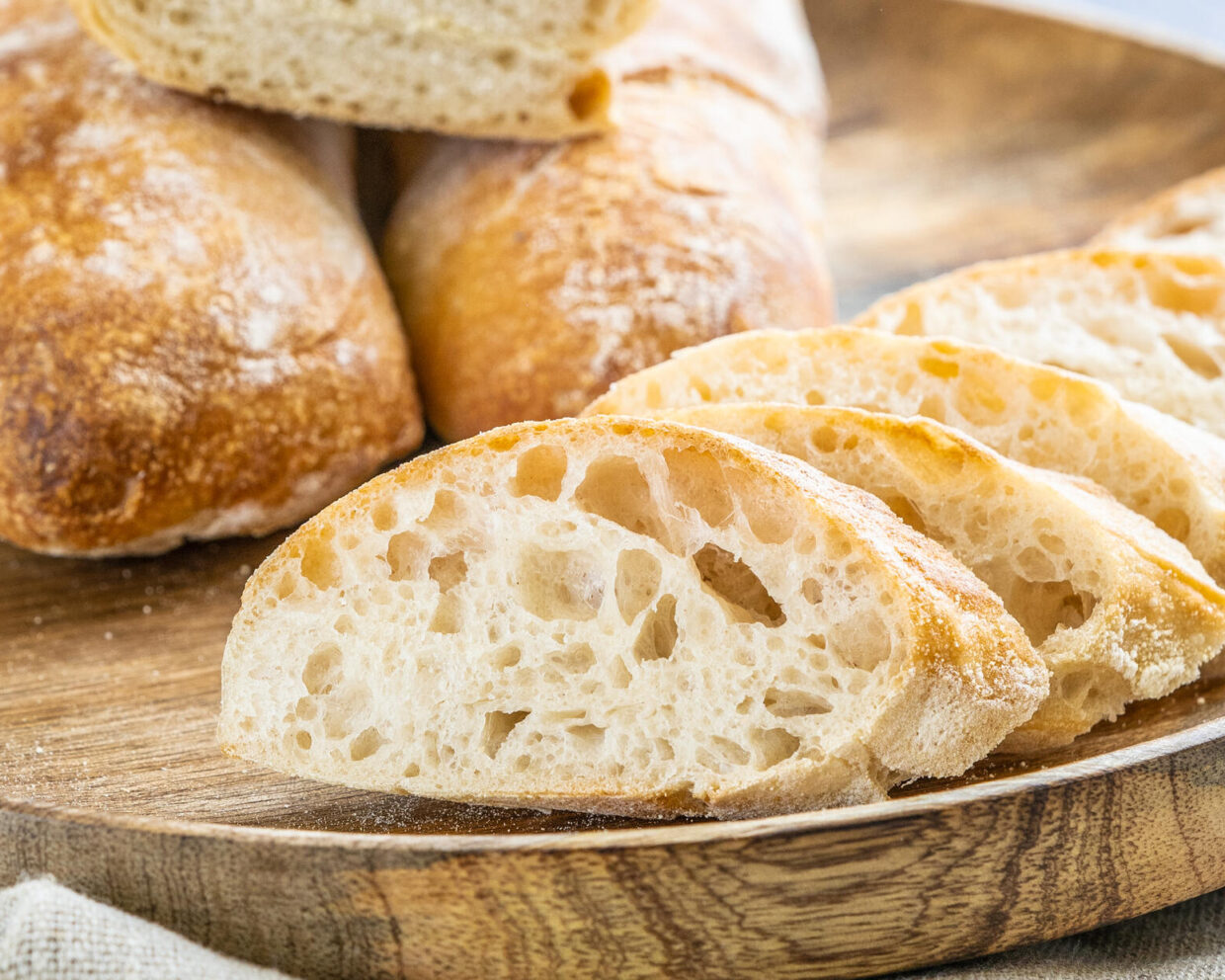
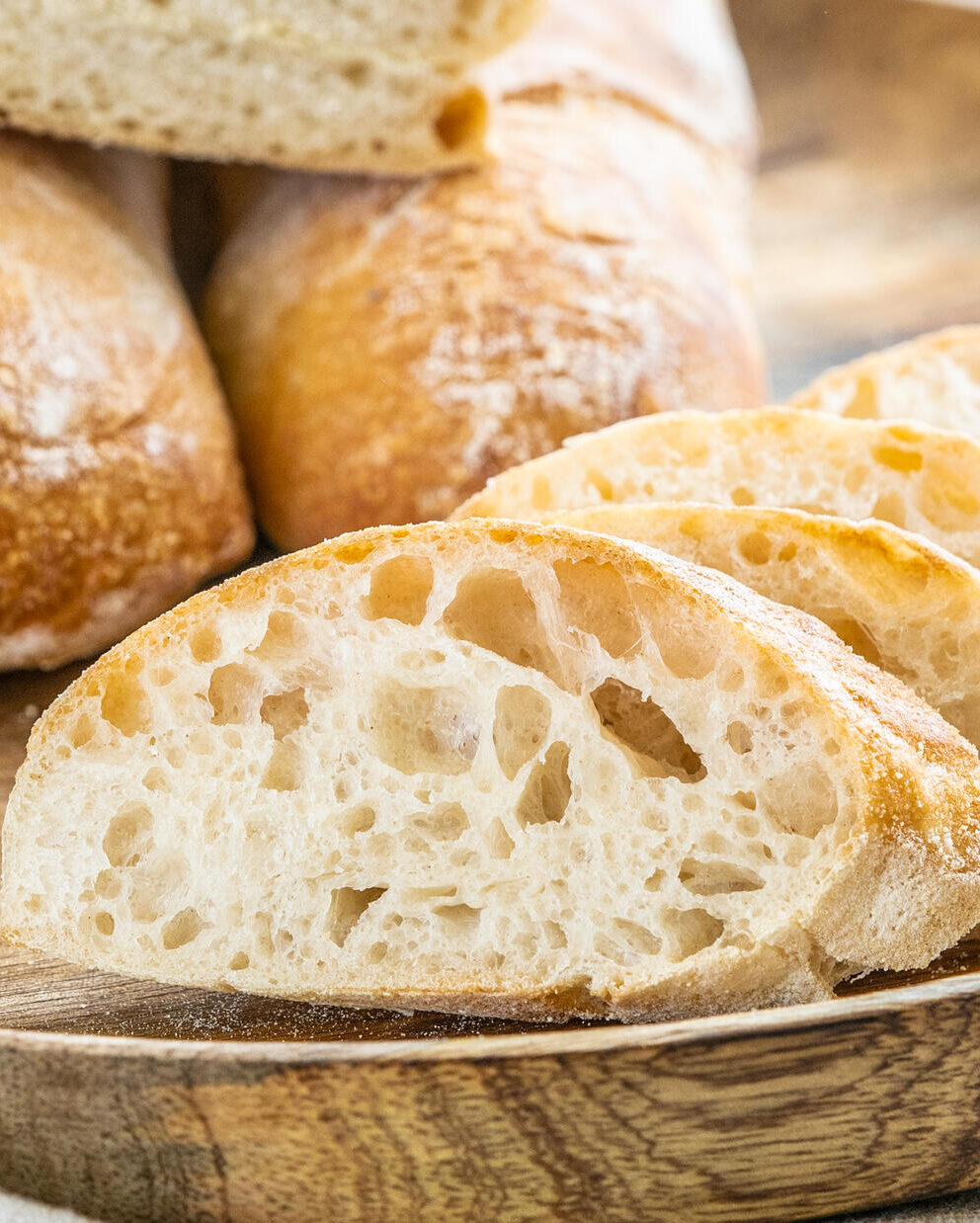
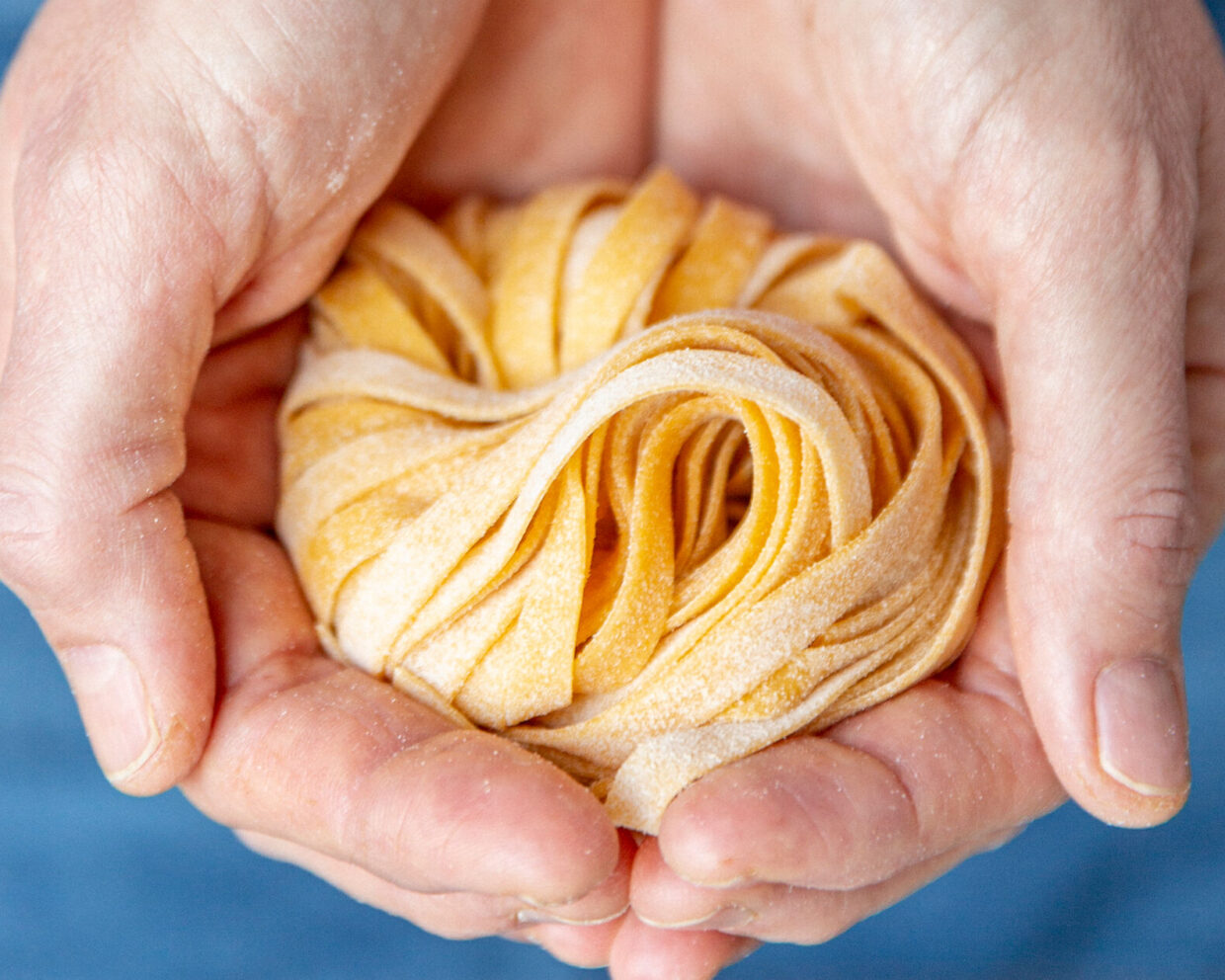
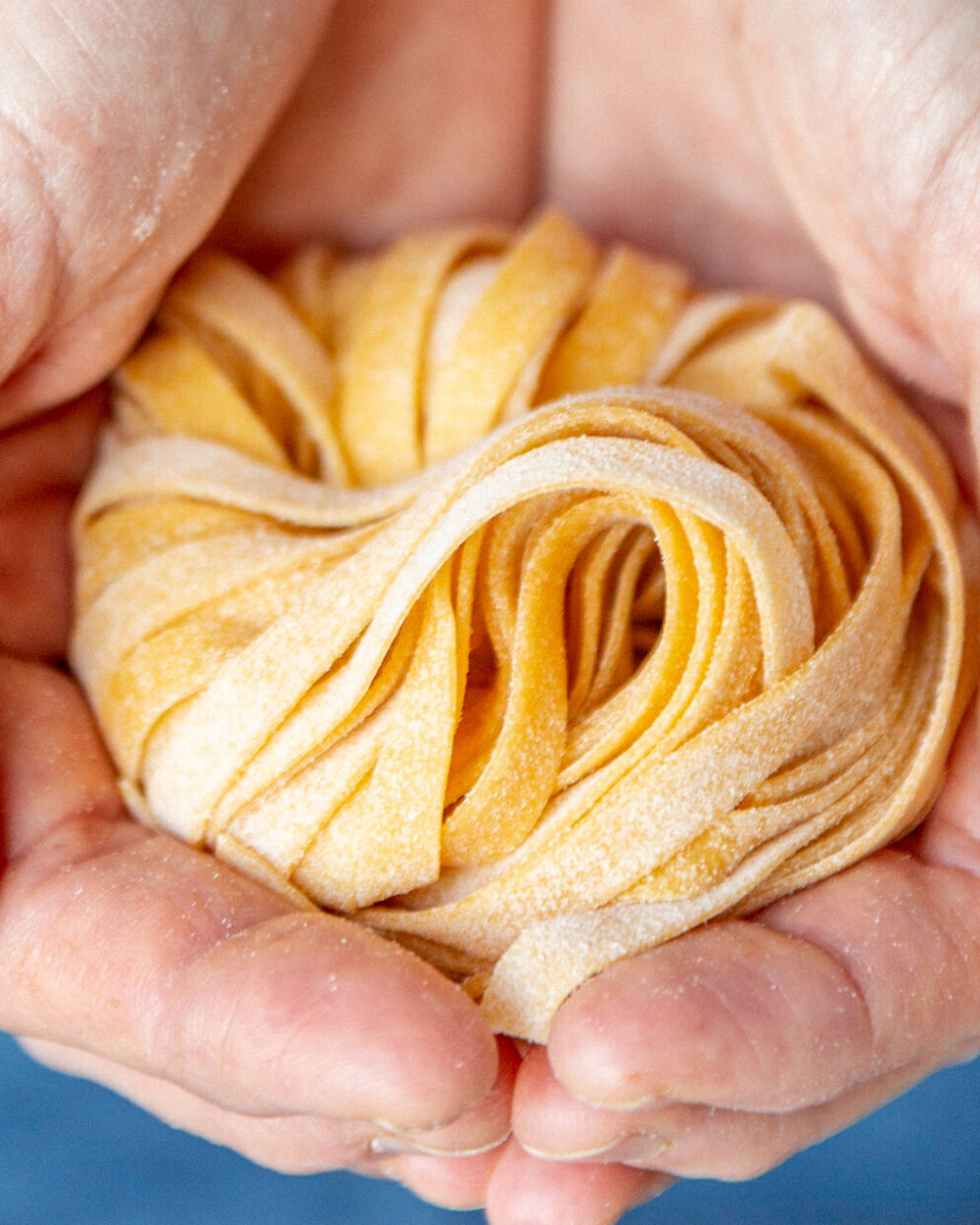
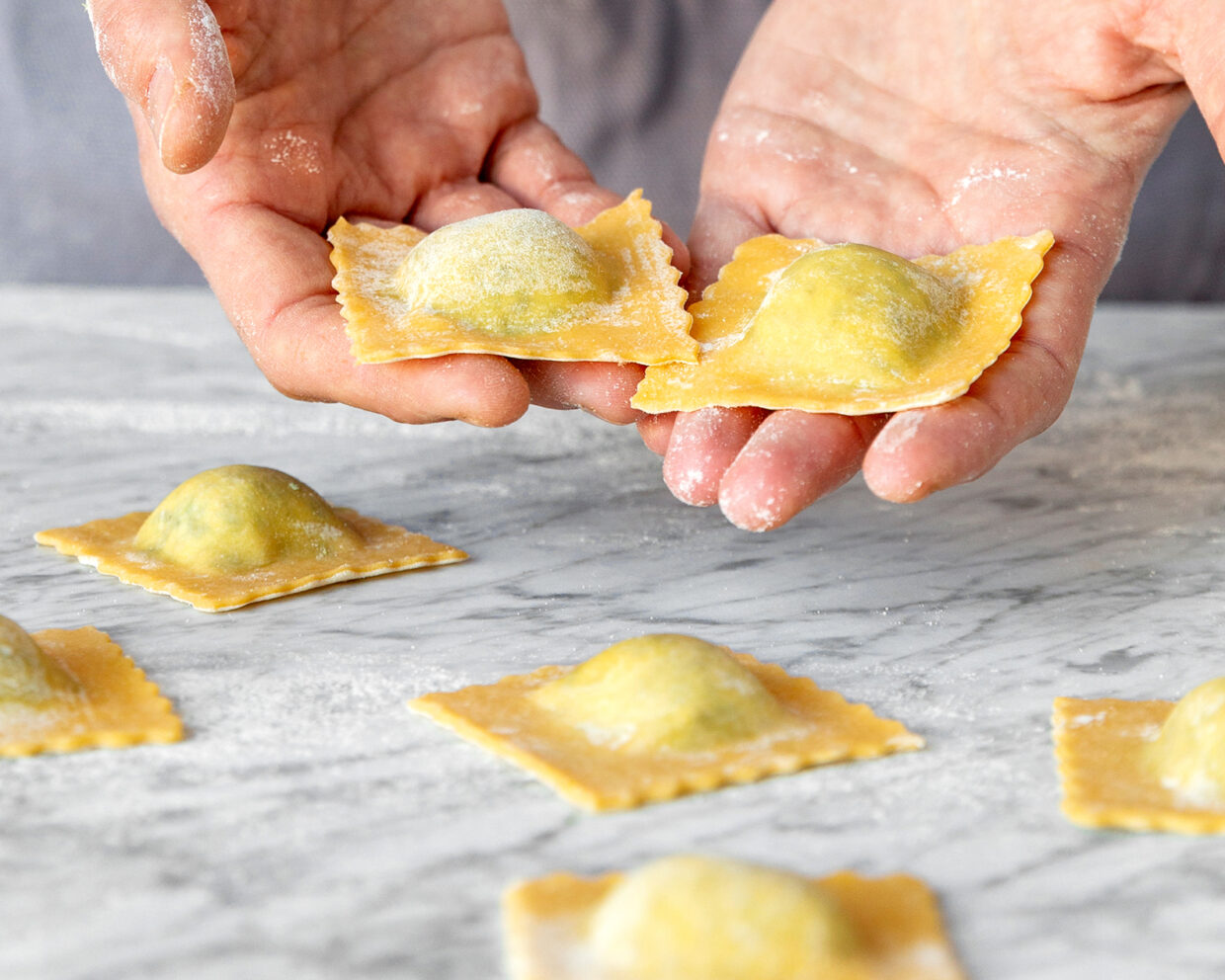
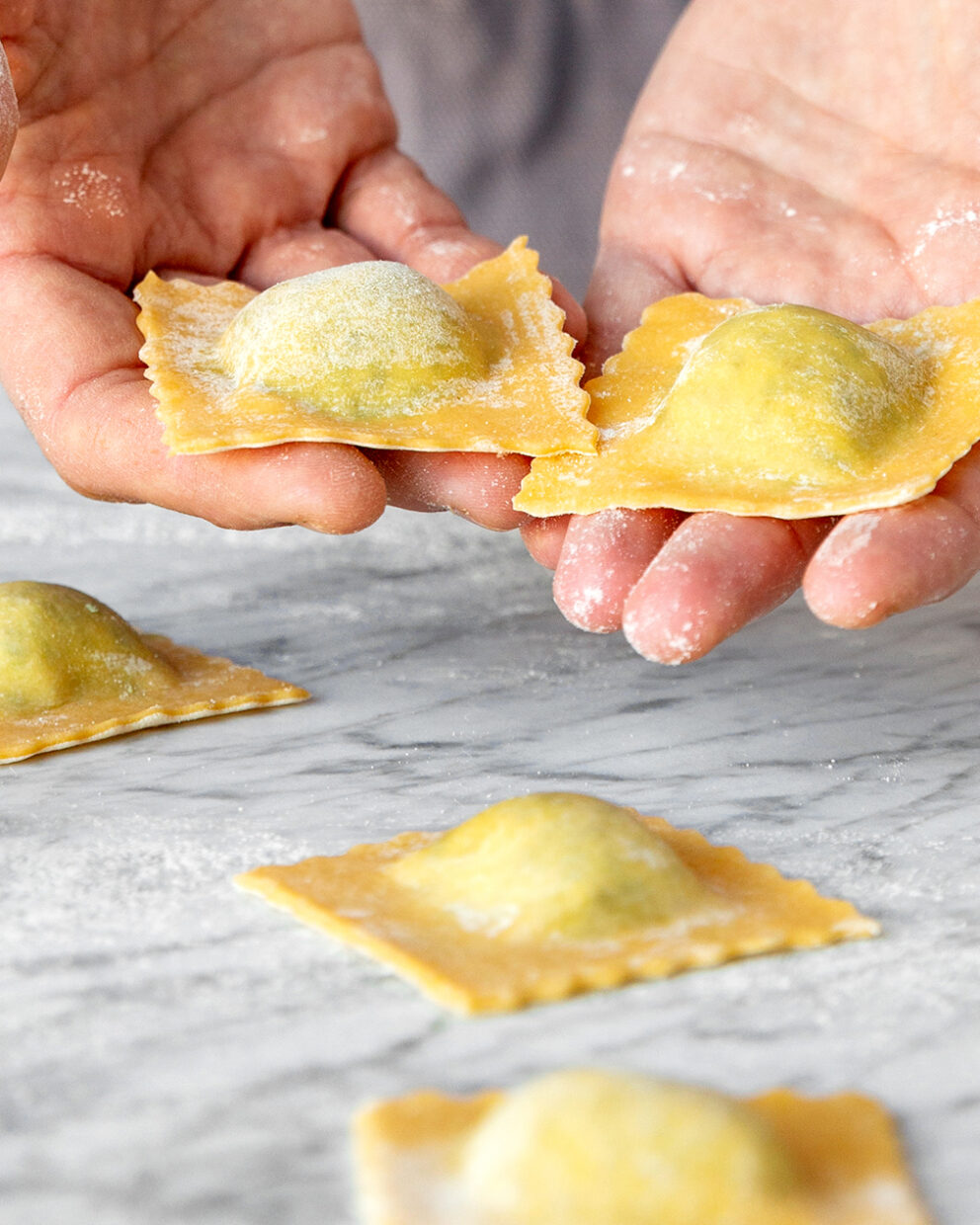
Want to share your thoughts? We're excited to hear what you think of the article. Tell us about your ideas, tips or questions! Leave a comment and share your knowledge with the community. Your opinion counts.
Write a comment